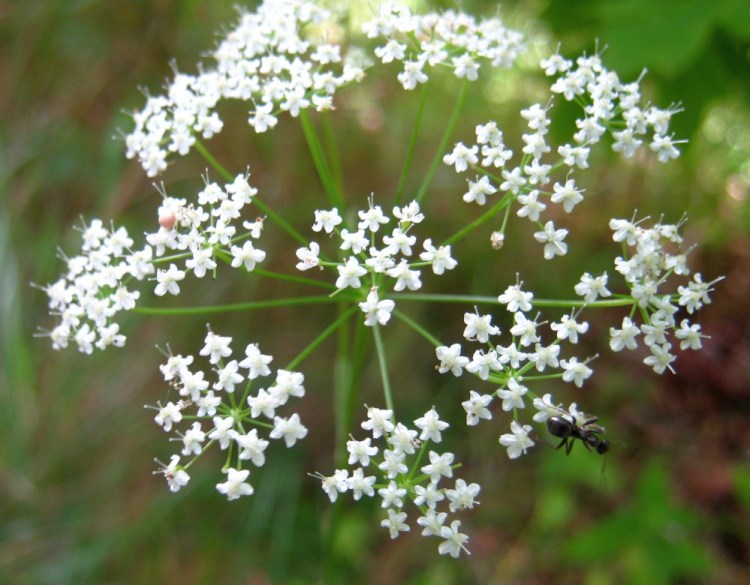Here we are again, deep into the most gorgeous three or four months of the New England year.
The air is turning crisp at night, the sun is finding its autumn angles, the purple martins are gone. There are already, I’m happy and sad to report, red leaves on the southern edge of Carlton Bog.
And in one of those glittering everyday invisibilities, like the dinosaur fossils that were everywhere for eons but hardly noticed until the 18th century, the scent of late summer is visiting down through the pines and settling into September.
Late summer, I mean, smells different from mudfetid March and even loamy May. For one thing the grass smells dry. Out of it breathes that strong sweet-cut scent, with sometimes surrounding it the bite of wild carrot — Queen Anne’s lace — when it gets mowed. On hot afternoons are tingling pitch and pine incenses, and the carpets of needles like a dry spice of the north woods. All now.
These odors have, to me, always blurred into one late-summer smell that I’ve hardly paid attention to, like a zodiacal glow in the peripheral vision of the nose. The way all colors blend together in white, late-summer smells seem to blend together, too.
A study recently revealed that humans — though our olfactory capabilities are 10,000 to 100,000 times weaker than dogs’ — can distinguish about 1 trillion different odors. It’s hard for the scientists to tell because there’s no continuum of scent, the way there’s a continuum of colors on the spectrum. Maybe this is because light travels in waves of energy while odors come on molecules, physically diving and darting on the breeze rather than refracting through atmosphere. Some insects are thought to zigzag so much because it’s the most efficient way to pick up the odor-molecules dancing from flowers where the nectar is and, by the way, the pollen grains.
There may be no spectrum of smells, but there is this unity of many scents. The pile of cut, split wood dumped last week in front of the garage radiates that redolence of sap and pulp. If you pay attention your nose can sort the dry-grass smell underneath it. And something else, which turns out to be the toadflax, or butter-and-eggs flowers, which up close smell so strong and sweet it’s practically perfume.
The miniature euphrasia grove next to the woodpile is too faintly scented to detect directly, but with your face down next to them you realize they’re blending into the woodscent, too. Them, and the St. Johnswort, faintsweet, the hawkweed blossoms with a distant microbouquet, and the Canada thistle, stronger. Dirt-sour crabapples are already hitting the ground. At night, a skunk. By the driveway I found a late wild-madder patch wispily pungent in the grass, and burdock, a sort of floralwood to my inefficient nose. If you strip a twig from a yellow birch, you get the bite of wintergreen.
Some goldenrods my nose is too dull to detect, but some, like the lance-leaved goldenrod, are honeylike. There’s a grasslike tang to most of their leaves, but sweet-goldenrod leaves, when crushed, smell like anise.
Along the embankment at the top of the driveway, a grove of white flowers grows that we used to assume was all Queen Anne’s lace. Tiny white flowers in compound umbels shaped like galaxies. But while wild carrot is among them — identifiable by a purple floret and bracts under the umbels — most of these are not Queen Anne’s lace. What they are, I don’t know. Summer after summer I’ve keyed them out with books. They’re not valerian or ginseng. Not water hemlock, poison hemlock, Scotch lovage, or any parsnip known to Maine. They most resemble caraway or hemlock parsley, but they’re not.
What they are is fragrant beyond belief. Collectively they radiate a rich, fruitlike fullness that floats down the breeze long before you see them. It overflows the air among the tall grass, goldenrod and white sweet clover up there. These unnameable wildflowers are an essence of the Pure Lands escaping into Maine, I’m convinced of it. The universe is filled with light.
Soon the woods will be stacking fallen leaves. Acorns will tumble like rain onto the shed roof, roll down and split on the ground. The season of mists and mellow fruitfulness is about to congeal out of late summer into the full-on scent of autumn, October oak. Eternity in an olfactory hour.
Dana Wilde lives in Troy. His writings on Maine’s natural world are collected in “The Other End of the Driveway,” available from online booksellers or by contacting the author at naturalist@dwildepress.net. Backyard Naturalist appears the second and fourth Thursdays each month.
Send questions/comments to the editors.




Success. Please wait for the page to reload. If the page does not reload within 5 seconds, please refresh the page.
Enter your email and password to access comments.
Hi, to comment on stories you must . This profile is in addition to your subscription and website login.
Already have a commenting profile? .
Invalid username/password.
Please check your email to confirm and complete your registration.
Only subscribers are eligible to post comments. Please subscribe or login first for digital access. Here’s why.
Use the form below to reset your password. When you've submitted your account email, we will send an email with a reset code.